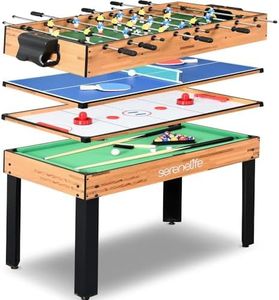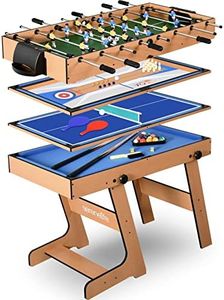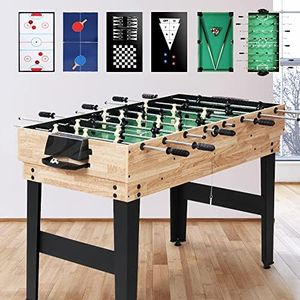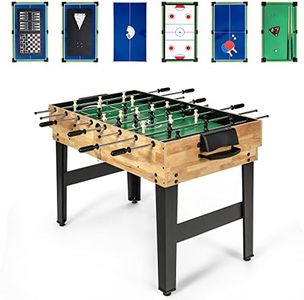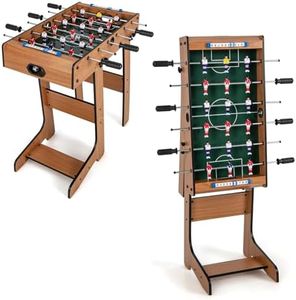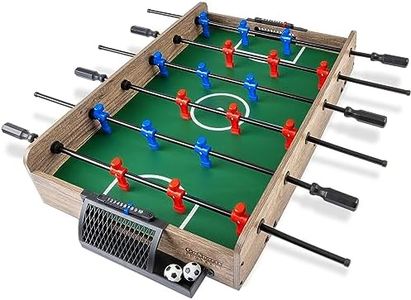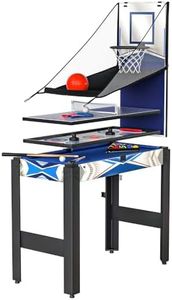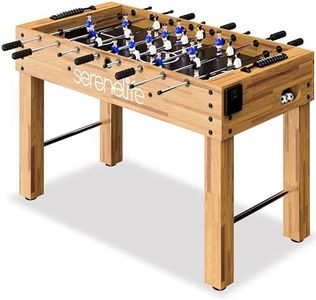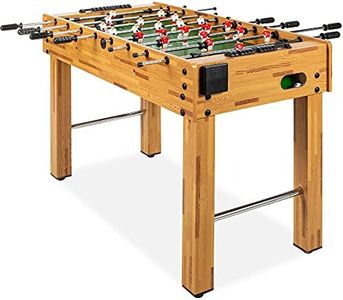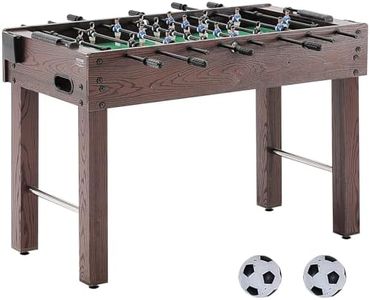We Use CookiesWe use cookies to enhance the security, performance,
functionality and for analytical and promotional activities. By continuing to browse this site you
are agreeing to our privacy policy
10 Best Foosball Tables
From leading brands and best sellers available on the web.Buying Guide for the Best Foosball Tables
Buying a foosball table can be a fun but sometimes confusing experience, especially with so many types and options available. Start by thinking about who will be using the table—kids, adults, or both—and how much space you have. Also, consider how frequently the game will be played, because this impacts which features and build quality you should prioritize. A good approach is to understand the key characteristics of foosball tables so you can match them to your needs and expectations, rather than just focusing on appearances.Table SizeTable size is all about the physical dimensions of the foosball table and determines how much playing area you'll have. Larger tables (around 56 inches long) are usually considered standard for adults or more competitive play, while smaller tables are more suited for kids or limited spaces. If you have plenty of room and want a more authentic and challenging game, pick a larger table. For tight spots or casual use, a compact or even tabletop model can work well.
Construction Quality and MaterialsConstruction quality and the materials used tell you how durable and stable the table will be. High-end foosball tables are made from solid wood or heavy composites, which resist warping and provide a consistent play surface. Cheaper tables may use lightweight materials like particle board or plastic, which can make them less stable and durable. If you’re looking for something for heavy and frequent use, choose a table made with sturdy materials and a solid frame. For occasional use by kids or easy storage, lighter construction could be acceptable.
Rod TypeRods are the metal bars you push and pull to move the foosball men. They can be solid or hollow. Hollow rods are lighter and offer faster play, which is great for competitive players, while solid rods are heavier and sometimes better for control and durability. If your main focus is speed and you want to play fast games, lean toward tables with hollow rods. If you want more control and ruggedness, solid rods are more appropriate.
Goalie ConfigurationSome tables have a one-man goalie while others have three-man goalie setups. One-man goalie systems offer a more traditional and challenging game, often preferred by enthusiasts, while three-man goalie tables make defense easier and speed up the game—good for beginners or casual play. Consider your own or your family’s skill level and style of play: if you want an easier, faster game, go for three-man; if you prefer more of a challenge, pick a one-man goalie.
Playing SurfaceThe playing surface is what the ball rolls on and can affect the speed and smoothness of the game. Smoother, higher-quality surfaces provide faster and more consistent gameplay, while cheaper surfaces may slow the ball down or cause it to drift. If you care about game quality or want to practice advanced moves, invest in a table with a high-quality playing surface. For casual play, a basic surface is usually enough.
Leg LevelersLeg levelers are adjustable feet that help keep the table balanced on uneven floors. This is important because even a slightly uneven surface can make the ball roll unfairly. If your home has uneven floors, or you plan to move the table around, choose a model with good quality leg levelers for a fairer playing experience. For a fixed, flat setup, leg levelers are less critical.
